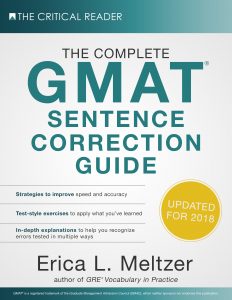The London Tube, the world’s first underground railway, opened in January 1863 between Paddington and Farringdon stations, using gas-lit wooden carriages hauled by steam locomotives.
(A) railway, opened in January 1863 between Paddington and Farringdon stations, using
(B) railway, opened in January 1863 between Paddington and Farringdon stations, to use
(C) railway, opened in January 1863 between Paddington and Farringdon stations; and used
(D) railway, which opened in January 1863 between Paddington and Farringdon stations and used
(E) railway, opening in January 1863 between Paddington and Farringdon stations, and using
Scroll down for the answer.
Answer: A
Sentence vs. Fragment, Participle Joins Clauses
The sentence contains a non-essential clause, so start by crossing it out to simplify the sentence: The London Tube…opened in January 1863 between Paddington and Farringdon stations, using gas-lit wooden carriages hauled by steam locomotives. The remaining sentence works in terms of both meaning and grammar, but if you’re not sure, you can check the other options. (B) is incorrect because only a participle (using) rather than an infinitive (to use) can be used to join clause. Note that this type of participle-infinitive switch is a common GMAT trick in wrong answers. (C) is incorrect because a semicolon should not come before the word and. (D) is incorrect because when it is plugged in, the sentence lacks a main verb: The London Tube… which opened in January 1863 between Paddington and Farringdon stations and used gas-lit wooden carriages hauled by steam locomotives. The verb opened “belongs” to the subject which; the subject of the sentence, The London Tube, does not have a verb. (E) is incorrect because this version contains only –ING words (opening, using) and, like (D) lacks a conjugated main verb. That leaves (A), which is correct.
